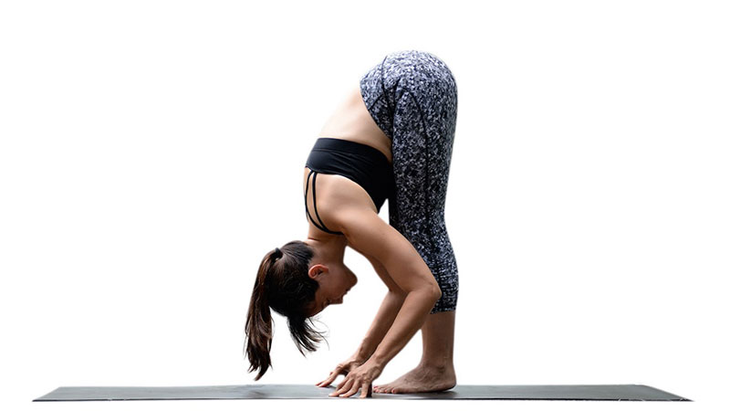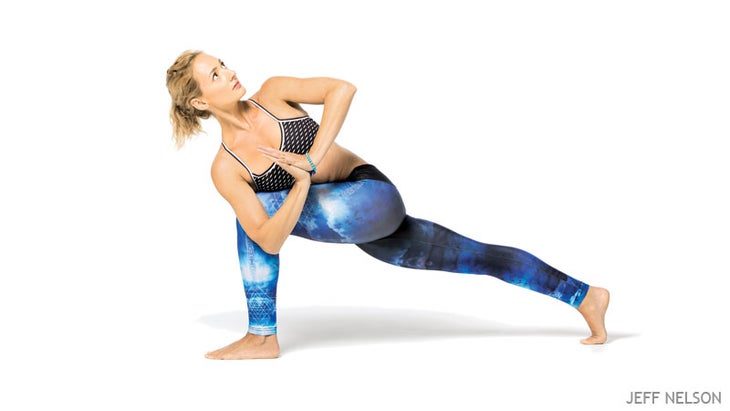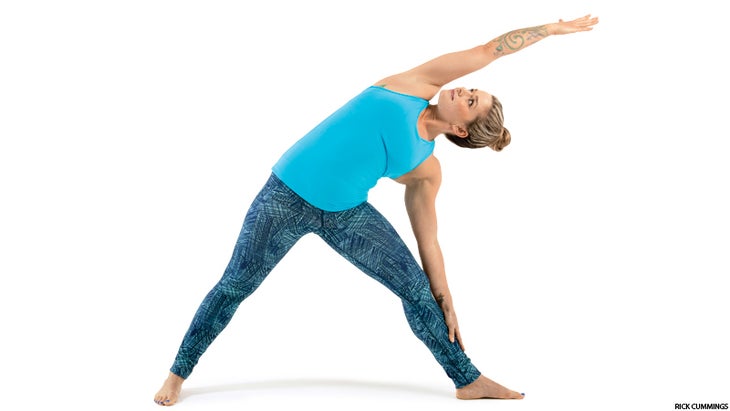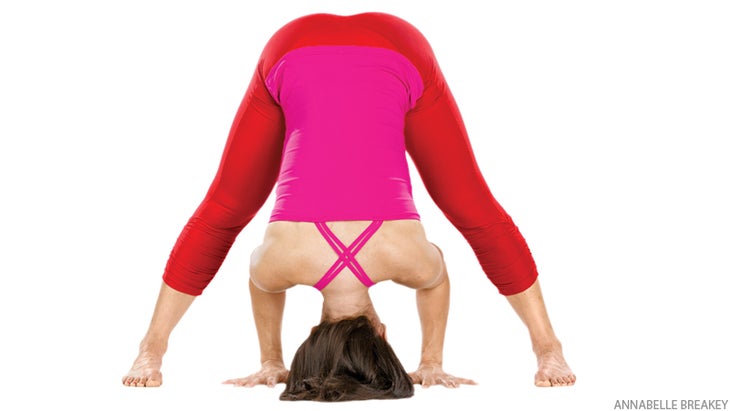Heading out the door? Read this article on the new Outside+ app available now on iOS devices for members! Download the app.

Mix a session of trail hiking with an outdoor yoga session to take your practice where it’s never gone before.
It’s summer, and a hike in the sunshine beckons—but so does the yoga class that starts in 15 minutes. Fortunately, opportunities to mix a session of invigorating trail hiking with focused, mat-free asana practice are everywhere these days.
See also Yoga for Hikers: 4 Poses To Try on the Trail
It’s no surprise that this practice has become a trend, says Eric Kipp, who started Hiking Yoga four years ago with 90-minute yoga-plus-hiking excursions in the San Francisco Bay Area. “There are lots of hikers who are tight as piano wire and lots of yoga people who are really out of aerobic shape,” he says. Yoga helps regular hikers become more limber, mindful, and aligned when they hike. And hiking offers greater lung capacity and overall-fitness to yogis who tend to do a less aerobic mat practice. What’s more, it’s a form of holistic multitasking that allows you to savor nature as you deepen your yoga practice.
See also 4 Yoga Poses for Hikers
Doing yoga on unfamiliar turf (literally) brings other benefits. In Kipp’s view, the unfamiliarity makes the experience rich. In life, he says, “you can’t control everything in your environment.” Learning to stay focused enough to practice yoga outside the studio amid distractions like noise and weather, he adds, is good training for staying attentive and flexible off the mat.
Check out hikingyoga.com for information about yoga hikes in 14 US cities.
4 Hiking Yoga Poses to Try on the Trail
Pause at scenic points to stretch your muscles and expand your lungs for the rest of your journey.

1. Uttanasana (Standing Forward Bend)
Benefits of Standing Forward Bend
Calm the brain and relieve stress and mild depression, stimulate the liver and kidneys, stretch the hamstrings, calves, and hips; Strengthen the thighs and knees, improve digestion, reduce fatigue and anxiety, relieve headache and insomnia. This pose is therapeutic for asthma, high blood pressure, osteoporosis, and sinusitis.
Beginner Tip
To increase the stretch in the backs of your legs, bend your knees slightly. Imagine that the sacrum is sinking deeper into the back of your pelvis and bring the tailbone closer to the pubis. Then against this resistance, push the top thighs back and the heels down and straighten the knees again. Be careful not to straighten the knees by locking them back (you can press your hands against the back of each knee to provide some resistance); instead let them straighten as the two ends of each leg move farther apart.

2.Parivrtta Parsvakonasana (Revolved Side Angle Pose)
Benefits of Revolved Side Angle Pose
This pose strengthens your legs, knees, and ankles, and gives you a full body stretch: groins, spine, chest and lungs, and shoulders. Plus, it improves balance for those more technical hikes, and increases your stamina overall.
Beginner Tip
Beginners often have difficulty maintaining their balance in this pose, especially with the back heel lifted off the floor. To improve your balance, support your heel, either by standing it on a sandbag or thick book, or by bracing it against a wall.

3. Utthita Trikonasana (Extended Triangle Pose)
Benefits of Extended Triangle Pose
Stretch and strengthen the thighs, knees, ankles, hips, groins, hamstrings, calves, houlders, chest and spine.
Stimulate the abdominal organs, relieve stress, improve digestion and relieve backache.
Beginner Tip
Brace your back heel or the back of your torso against a wall if you feel unsteady in the pose.

4. Prasarita Padottanasana (Wide-Legged Standing Forward Bend)
Benefits of Wide-Legged Standing Forward Bend
Strengthen and stretch the inner and back legs and the spine, tone the abdominal organs, calm the brain and relieve mild backache.
Beginner Tip
Most beginning students aren’t able to easily touch the crown of their head to the floor in the last stage of this forward bend. Instead you can support your head on a padded block, a thickly folded blanket, or a bolster.